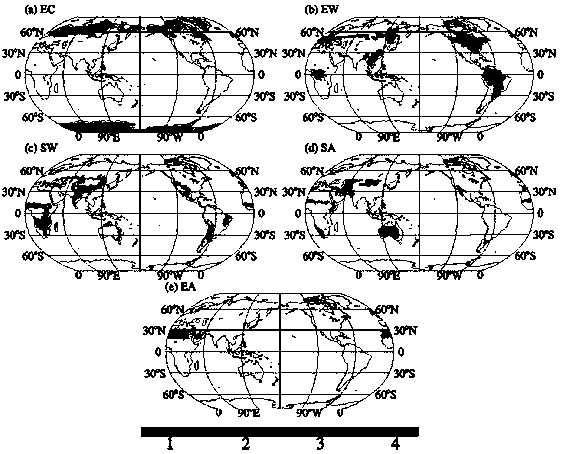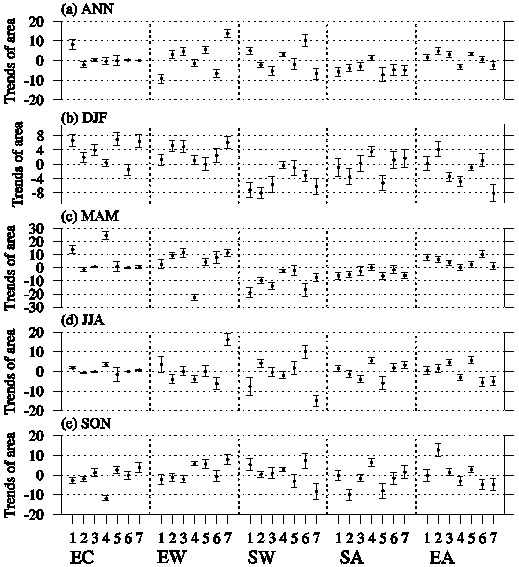A simple global climate zoning method
A climate and global technology, applied in the direction of complex mathematical operations, etc., can solve problems such as inability to use the global land, inconvenient use, and zoning uncertainty, and achieve the effects of flexible zoning, reduced participation, and simplified calculations
- Summary
- Abstract
- Description
- Claims
- Application Information
AI Technical Summary
Problems solved by technology
Method used
Image
Examples
Embodiment Construction
[0013] 1. The calculation formula of Bowen ratio has been revised
[0014] a. Calculation formula of Bowen ratio
[0015] Based on the fact that Bowen ratio (1) has a good ability to distinguish dry and wet underlying surfaces, the calculation formula of Bowen ratio is:
[0016] ….. (1)
[0017] In formula (1), Hs is sensible heat flux (upward is positive, downward is negative), E is latent heat flux (upward is positive, downward is negative), l is latent heat gasification coefficient.
[0018] b. In the formula (1), the sensible heat flux propagates upward in high-temperature areas such as the dry heat of the underlying surface of the desert, and has a larger area (the direction is upward, pointing to space) and has a positive value, while it has a positive value in cold areas such as Greenland If the value is smaller (the direction is pointing to the surface), the value is negative; the dry and wet state of the surface is characterized by latent heat flux; when there is ...
PUM
 Login to View More
Login to View More Abstract
Description
Claims
Application Information
 Login to View More
Login to View More - Generate Ideas
- Intellectual Property
- Life Sciences
- Materials
- Tech Scout
- Unparalleled Data Quality
- Higher Quality Content
- 60% Fewer Hallucinations
Browse by: Latest US Patents, China's latest patents, Technical Efficacy Thesaurus, Application Domain, Technology Topic, Popular Technical Reports.
© 2025 PatSnap. All rights reserved.Legal|Privacy policy|Modern Slavery Act Transparency Statement|Sitemap|About US| Contact US: help@patsnap.com



